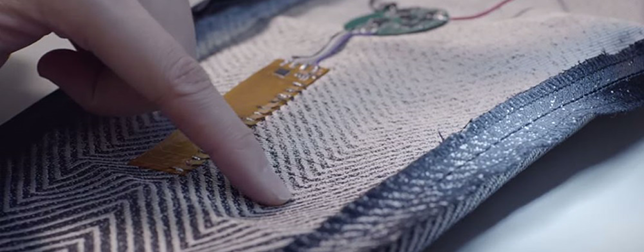The Medical Smart Fabric market all throughout the world is set to experience an astonishing growth by the end of the forecast period of 2018-2027, according to Market Research Future (MRFR). Medical textiles provide the wearer increased functionality with the help of inserted digital components and gadgets.
Patients’ need to have wearables to increase their flexibility is driving the development of smart fabrics of various types in the medical industry. The use of Fiber optic sensors (FOSs) is becoming widely accepted as a substitute to traditional mechanical and electrical sensors for the monitoring of thermal and mechanical parameters. The FOSs are small in size, they possess good metrological properties, and they are very flexible and immune to electromagnetic field.
There are a number of research institutes who are working to commercialize and innovate high-tech fabrics. Advances in microelectronics and nanotechnology are creating demand for medical smart textiles.
Some key players of this market are Innovation in Textiles (UK), AiQ Smart Clothing Ltd. (Taiwan), SENSING TEX S.L. (SPAIN), Ohmatex ApS (Denmark), and Schoeller Textile (Switzerland).
The smart fabric market is going through innovation every day due to growing investment in research and development sector. For example, Clothing+ has partnered up with Jabil to mass produce textile-integrated sensors. The companies are now trying to develop a bio-impedance vest that reveals heart conditions. A washable stocking is being developed by ApS to monitor and measure signs of edema in the lower limbs. Hexoskin is running trials for clinical-grade sensors for accurate ECG and its application in smart textiles. Wearable X is trying to bring together design and technology to create a better quality of life.
Universities are also doing research on smart fabrics. ElectroScience Laboratory of Ohio State University (OSU) is working to develop functional smart textiles with antennas, such as the Intel Edison development platform that senses brain activity to help treat epileptic or addiction-related issues.
However, the high cost of producing smart textile is the main obstacle. Its sophisticated technology requires top-notch materials and manufacturers haven’t yet achieved a cost-price balance.
Read more MIT Engineers Create Pressure-Responsive Smart Fibers That Change Color to Show Bandage Pressure
Research and developments are presently underway to combine fiber sensors and medical smart fabrics into one single wearable unit. Rising demand in sports and fitness wear can boost sale significantly. The integration of sophisticated sensors, gadgets and chips in medical smart textiles is bringing a variety of stakeholders into the market.
For manufacturers, getting regulatory approvals is a complex affair. On the other hand, factors such as accuracy, reliability, and certification can pose some serious threats to this mushrooming market.













